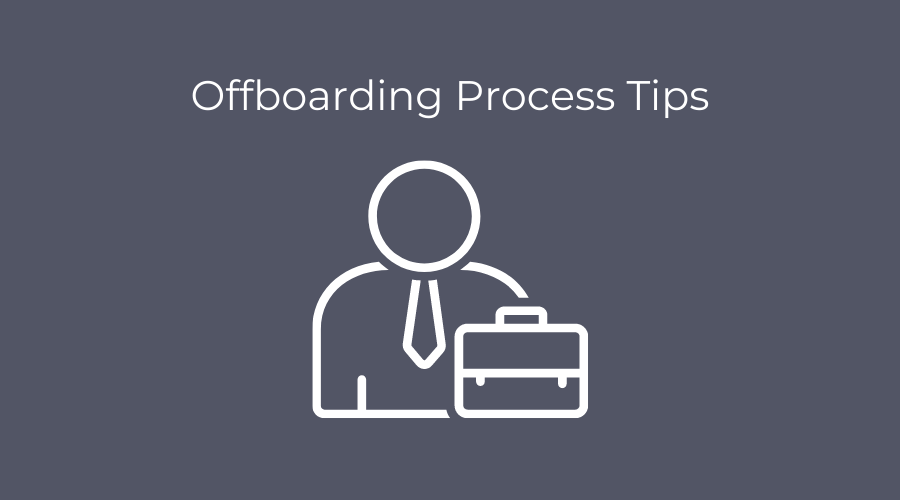
Offboarding Process Tips
Think for a moment about how much time and effort go into recruiting and onboarding the talented people you hire. How does that compare to what you invest in their eventual offboarding?
With very few exceptions, the offboarding process is almost an afterthought. According to research by Aberdeen, only 29% of companies have a formal offboarding program. Even then, many of those are little more than checklists of the paperwork that needs to be completed by the departing employee.
Other research by the business strategy consulting company SBI found HR professionals invest 8x more time developing and managing onboarding programs than they do on offboarding.
Why does this matter? Because a good offboarding process tips the scales in favor of the employer when it comes to – surprise! – retention and recruiting. Employees who leave an employer feeling good about the way their exit was handled are much more likely to refer others to the company, leave positive reviews, mentor their replacements and return as boomerangs.
“A well-managed offboarding process can turn employees into loyal alumni who become customers, suppliers, boomerang employees, mentors to current workers and ambassadors for the firm,” said Erin Makarius, associate professor of management at the University of Akron in Ohio, an author of a report this spring in the Harvard Business Review.
An array of studies and research don’t just detail the importance of offboarding, they analyze the value, offering specific offboarding process tips to help HR teams develop the kind of programs that create brand ambassadors of former employees.
Most employers already have procedures for handling the legal requirements and other basics. A successful offboarding program goes beyond that, says Makarius and his co-author, Alison M. Dachner, associate professor at John Carroll University. Here are some of the more valuable of the offboarding process tips compiled from their report and others.
-
- Treat exiting employees with respect. This is as true for those involuntarily terminated as for those leaving on their own. Resist the temptation to make a show of hustling fired employees out of the building. Affording everyone a measure of respect will help avoid the bad feelings that can lead to negative reviews, dissension in the ranks and possible lawsuits.
- Create an alumni group. Think of your departing workers not as ex-employees, but as a valuable resource. Just as a university engages its grads, stay in touch with your alumni. Keep them up-to-date with news about the company and about each other. In addition to using social media – many alumni groups exist on Facebook — a periodic newsletter serves as an extra way to communicate. Alumni are also a valuable resource to take on contract work or special projects.
- Exit interviews. In high-performing companies, these interviews are analyzed and the results reported up the chain. They are an invaluable tool for uncovering problem managers and cultural shortcomings, if they are acted upon. Recognizing the reluctance of departing employees to burn bridges, many companies will conduct an exit interview at the time of departure, then follow-up with the employee 30 or 60 days later.
- Mentorship. Positioning the training of an employee’s replacement as a mentorship is a more positive and enduring way of ensuring a knowledge transfer. Asking the departing worker to help with the transition and giving them the support to do that, will often make for a smoother handoff with the mentorship extending into the alumni phase of the relationship.
The internet has no shortage of offboarding process tips. A search for “offboarding process” brings up thousands of results including multiple checklists of the legal and practice steps. Meeting those requirements is important and has to be a part of any offboarding process.
The offboarding process tips here, though, go the heart of a company’s culture. A strong culture, the kind that has talent wanting to join you, doesn’t end with the last paycheck. Your alumni may be tomorrow’s boomerang employees and certainly you want them to be today’s brand ambassadors.
### Contribution by John Zappe ###

.png?width=352&name=empl-experience%20(1).png)
